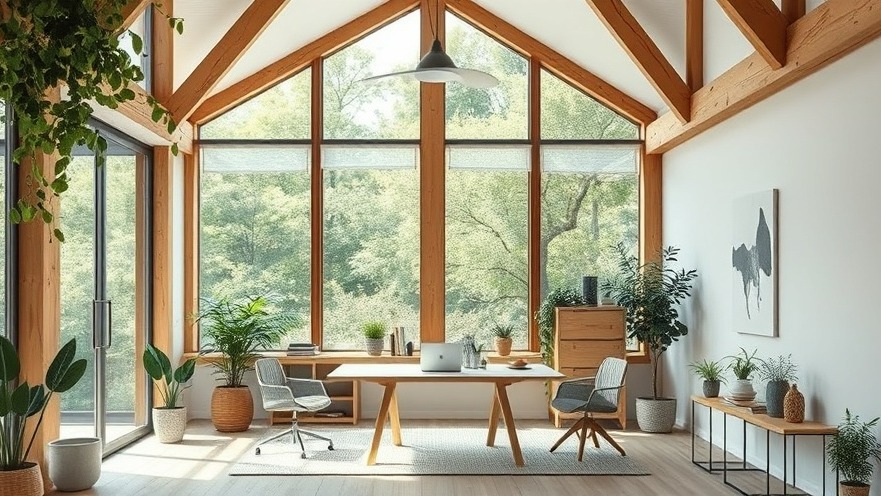
Camouflaging Comfort: The Kim-oflage Studio
In today’s fast-paced world, digital nomads are seeking new ways to work from home, and the burgeoning trend of garden studios is rising to meet their demands for quiet, flexible workspaces. The Kim-oflage studio in Nunhead, designed by Delve Architects, exemplifies this shift, creating a multifunctional space that not only promotes productivity but also harmonizes with nature.
Blending In: The Architectural Mastery Behind Kim-oflage
To design Kim-oflage, Delve Architects swapped black timber cladding for glossy green tiles, ensuring that the studio mimicked the surrounding foliage. This clever design not only minimizes visual mass—an essential aspect in tight urban spaces—but also reflects a growing interest in sustainable architecture. “Our aim was to foster a seamless connection between the home and garden,” says designer Philip Russell, emphasizing the importance of integrating workspaces into natural settings.
Social Significance: A Sanctuary for Creativity
For the clients, Kit and Imogen, the studio is more than just an office; it's a retreat for creativity, relaxation, and social interaction. With designated areas for painting, yoga, and reading, Kim-oflage caters to the holistic lifestyle of its users, providing a tranquil environment that encourages work-life balance. For digital nomads, the design serves as a blueprint—showing how personal undertakings can flourish when workspaces feel inviting and intentional.
Design Features Enhancing Functionality
At its heart, Kim-oflage is divided into two zones: a work area equipped with a desk compact enough to encourage focus and a couch area for guests that doubles as a sleep space. Skylights and large bifold windows ensure an abundance of natural light, further enhancing the studio’s warm, intimate atmosphere. Expert ergonomic design principles also underpin many of its features, from furniture layout to storage solutions, ensuring efficiency for users whether they are working or unwinding.
Sustainable Choices: The Green Philosophy Embedded in Design
Delve Architects has made sustainability a key component of its design philosophy. Utilizing natural materials such as timber and employing strategies to enhance energy efficiency through insulation and glazing transforms Kim-oflage into an eco-friendly workspace. In an era where energy conservation is paramount, this studio showcases how sustainable choices can lead to beautiful and functional design.
Visiting Kim-oflage: An Experience of Discovery
The studio is designed to be appreciated gradually; it reveals itself slowly as one traverses through the lush garden, creating an engaging experience of discovery. Users approaching Kim-oflage will find that, although it is subtle in appearance, the studio serves numerous practical functions that cater to both work-related tasks and leisure activities. Its multifaceted nature exemplifies how spaces can better adapt to contemporary living needs.
Implications for Future Designs: Lessons Learned
This project demonstrates a vital principle in residential architecture: adaptability. With the rise of work-from-home culture, spaces need to reflect more than just current trends; they should be prepared for the evolving needs of their inhabitants. Digital nomads can glean valuable insights from the Kim-oflage studio about how to incorporate flexibility and functionality into their work environments.
Conclusion: Embrace Flexible Living with Purpose
As more people find themselves working remotely, the demand for thoughtful and effective workspaces continues to grow. The Kim-oflage studio not only meets this need but inspires creativity and well-being through its design, proving that workspaces can be both practical and picturesque. If you’re considering ways to enhance your home office experience, let Kim-oflage guide you toward creating a space that reflects both productivity and tranquility.
Ready to transform your workspace? Explore practical design ideas inspired by Kim-oflage to create your own sanctuary for productivity and relaxation!
 Add Row
Add Row  Add
Add 




Write A Comment